Moving Giants
Tree relocation is an eco-friendly alternative to removal
Este es nuestro intento de convertir las historias en audio español usando Inteligencia Artificial. Aún así le recomendamos que reconfirme ciertas palabras clave y temas. ArborTIMES no garantiza ni se responsabiliza de la conversión del inglés al español de los relatos.
.
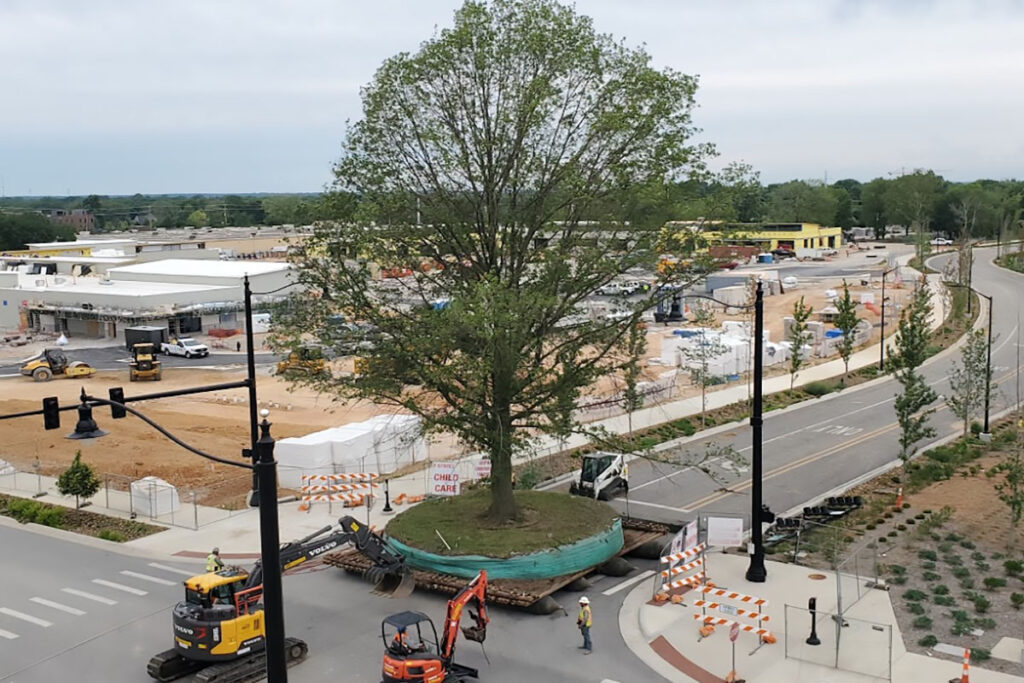
In the world of arboriculture, tree care professionals love growing, maintaining, and preserving the beauty of magnificent trees across the US. That’s why tree relocation has emerged as a vital, sustainable solution that balances development needs with environmental preservation.
Unlike traditional tree removal — which results in the death and discarding of a tree — relocation offers a method to preserve mature, valuable trees while accommodating urban expansion and landscape redesigns.
However, moving a large tree can be an immense task that requires a complex and multifaceted approach.
“There are definitely risk factors. You can’t just start digging and ripping up the roots of this tree,” says Trevor Holland of Big Trees of California, which moves and transplants trees across southern California. “Everybody knows we’re saving the life of this tree. Everybody understands and appreciates that.”

The “Whys” of Tree Relocation
With urban and suburban expansion often comes the need to clear many areas of trees. Relocating a tree most often stems from the need to clear a site for construction or to enhance a landscape aesthetically without sacrificing mature trees.
While this practice is often met with disdain and even protest from the public, there are several compelling reasons why tree relocation is becoming a preferred alternative to tree removal.
Environmental Benefits
Large, heritage trees are irreplaceable assets to our communities, and they provide substantial environmental benefits. Among those benefits are air purification, carbon sequestration, and heat reduction.
Preserving these significant trees through relocation not only maintains their environmental benefits but also helps sustain biodiversity. In urban areas, mature trees are particularly valuable for their ability to mitigate the heat island effect, making urban environments more cost-efficient and livable.
“Everybody’s pro tree,” says David Marks, central division vice president of Environmental Design, which moves and transplants trees across the country and around the world. “I mean, we don’t ever get people protesting because there are trees being moved. Generally, there are people out there cheering you on, which is really fun.”
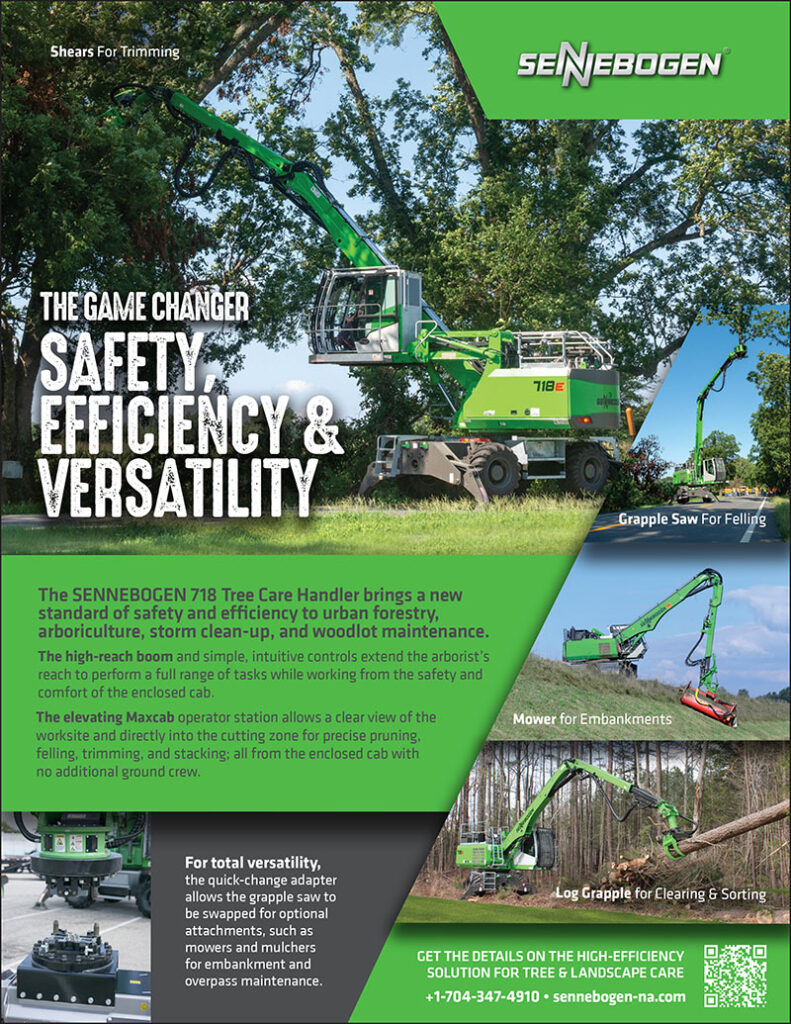
Aesthetic Benefits
For new developments, the presence of mature trees can cause big problems during the construction process, but their presence also benefits the property aesthetically. They provide an instant landscaped feel that new plantings cannot match.
Clients who choose tree relocation over removal avoid the years it can take for new trees to mature, thus allowing them to enjoy the benefits of mature trees immediately. This is especially important in fast-developing urban areas where time and aesthetic value are of paramount importance.
Property Value
Tree relocation is not just about preserving nature but also about asset management.
Large, mature trees are often considered assets that enhance property value exponentially. By choosing relocation, clients maintain or increase the value of their property, providing immediate return on investment compared to the slow growth of new plantings.
“We’re getting people to understand the importance of having these heritage trees that are big and signatory,” says Holland. “We’re giving these trees a whole new life, and it’s instant growth instead of waiting years.”
The Relocation Process: From A to Z
Relocating a tree is a complex, delicate process that requires careful planning and execution.
Species, Season, and Soil
The first step when moving a tree is evaluating the project itself. The success of tree relocation can depend heavily on the time of year, the species of the tree, and the soil conditions in both the tree’s current location and the new location.
Some species of deciduous trees, tolerate relocation very well and can be moved during their dormant season. On the other hand, trees with long taproots, like certain oaks, walnuts, and pecans, are much more difficult to transplant, since damage to the taproot could potentially kill the tree.

Marks says Environmental Design uses an altered excavation process when moving a tree with a deep taproot.
“Anything with the taproot, we’ll go less diameter of a root ball,” he says. “And go deeper and have a cylinder-shaped root ball so we’re getting the taproot.”
Of course, certain trees can be greatly harmed if they’re moved during a less-than-ideal season. For example, deciduous trees shouldn’t be moved during their blooming or growing season. These are best moved during dormancy in late fall or early spring. On the other hand, evergreens prefer early spring or late summer as an ideal transplanting season.
It’s critical to know and understand the nuances of the tree you’re working with to ensure an efficient relocation process and its future health.
When planning for tree relocation, the soil at the tree’s current location and the soil at the proposed new site must be thoroughly evaluated.
Marks says that examining the soil conditions enables you to plan for the methods and machinery needed during the excavation process. These considerations will also help you price the project and quote the job accurately.
“The challenges of soil conditions are a big [price] factor. Because there’s so much rock in Austin, we had to buy a half a million-dollar machine to get around the rock,” he explains. “We bought kind of a directional, rock-boring machine to drill our holes to put our pipes in because you couldn’t pound them. There’s no way to go through it.”
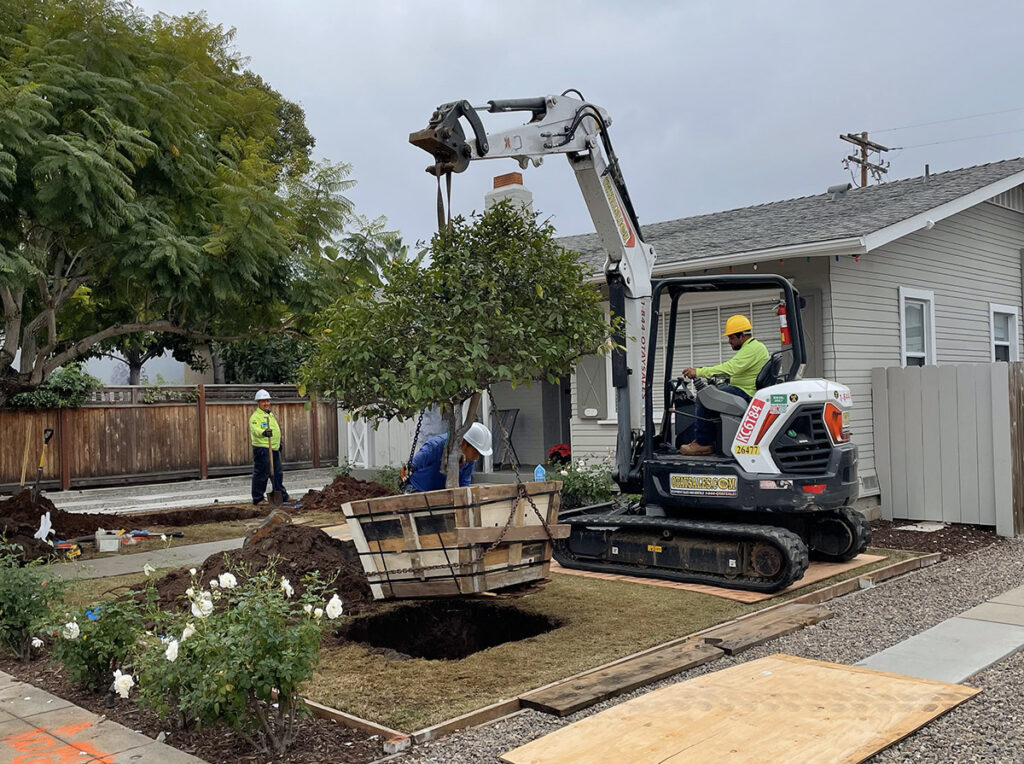
Another consideration when it comes to soil condition is the soil’s texture, nutrient content, pH level, and drainage capabilities. These factors can influence the tree’s ability to adapt and thrive post-move.
Ensuring compatibility in soil conditions between the two sites helps facilitate a smoother transition for the tree, enhancing its survival prospects and promoting healthy growth in its new environment.
Site and Tree Inspection
Before a tree can be relocated, a thorough inspection of both sites and the tree’s health is also crucial. This step helps identify potential challenges such as pests and diseases, proximity to buildings, access to the site, and the presence of underground utilities.
Holland explained that his team does safety meetings and walkarounds before any excavating is ever even planned.
“If there’s any kind of utility within the area, it’s marked out. If there’s something else, you identify where it is,” he says. “Problems on the job site, a steep grade, the potential of the tree tipping over — everything is identified before we do anything.”
Marks says that the involvement of experienced arborists is crucial during this step. They assess the tree’s health prior to putting it through the stress of transplanting.
“When you have somebody who wants to spend a large sum of money moving a tree, you want to deem that it’s healthy,” he says. “And we have certified arborists on staff that will go and look at the trees and, in some cases, climb the trees and make sure that there aren’t any issues health-wise.”
Also, consultations with various city departments may be necessary to manage logistical issues like street closures or traffic management during the move itself. This ensures a safe and efficient relocation process.
Pre-care
Pre-care is vital when you’re moving a tree, and typically involves watering, pruning, and possibly fertilizing the tree to ensure it is in optimal health before the move.
Root pruning and other pre-care procedures may be carried out months ahead of the physical relocation. This encourages the development of a more compact, manageable root system, which will be less shocked during the move.
“We’ll let it sit, if we have the luxury, for a whole year if time allows,” says Marks.
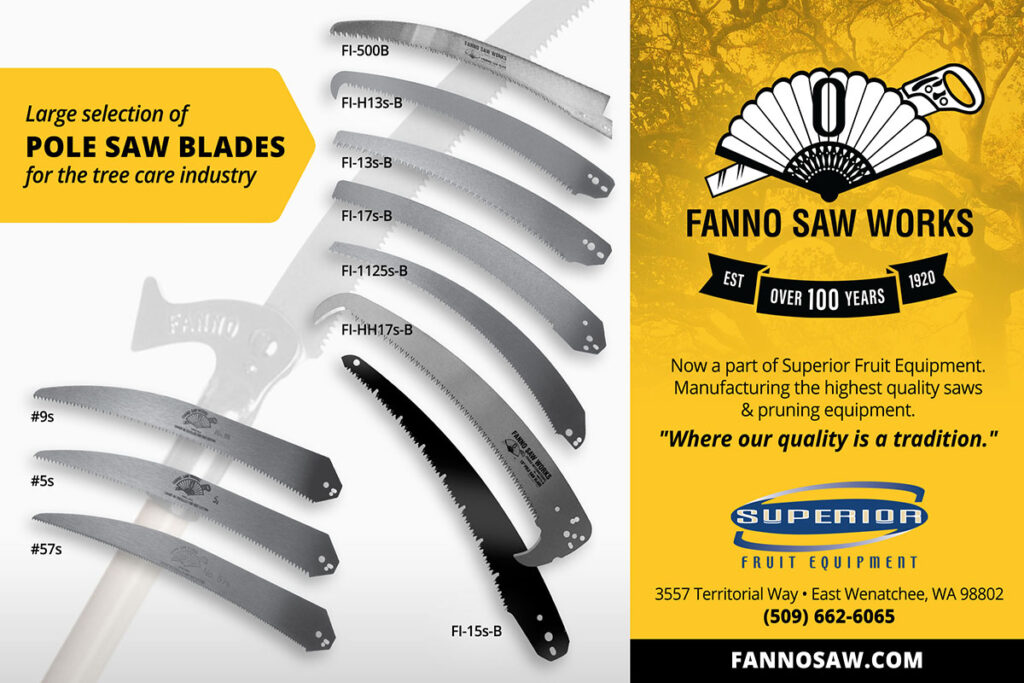
The Big Move
On moving day, specialized equipment and techniques are used to ensure the safety and viability of the tree. Big Trees of California, for example, is currently involved in a project that will require moving a California Pine roughly 20 miles.
“They wanted a big signatory tree, and California Pine is endemic to California,” he explains. “So, we identified the tree and we’re going to lay it over on a truck, but there’s a lot of care involved.”
Techniques like boxing the root ball or using cranes are common. One unique and effective method is Environmental Design’s ArborLift® tree relocation system, which Marks says has significantly enhanced the survival rates of relocated trees.
“We applied large pneumatic bladders, if you will, that are long, thin tubes, and they weigh about 150 pounds apiece,” Marks explains. “And at 30 PSI, they can pick up almost 200,000 pounds.
“You still need a couple of track hoes, depending on the size of the root ball, to navigate the root ball, particularly on unlevel ground,” he continues. “Then, we usually pull the ArborLift® bladders with a skid steer loader around to the front, and then it rolls up onto the next ArborLift® bladder.
“Then the next one comes out the back, and they pull it around, keeping a calculated number of bags strategically placed under the load. So, we have a system where the guys are all working together to move the tree, similar to how the Egyptians moved extreme weights when building the pyramids.”
With the advent of ArborLift®, Marks says there’s now no weight limit for Environmental Design when it comes to moving large trees.
“We’ve moved trees close to two million pounds, including the soil, that are eight feet, nine feet, 10 feet diameter, and we have a 99% survival rate,” he says.
Re-Planting and Post-Care
Re-planting involves placing the tree in a well-prepared site that mimics the original growing conditions as closely as possible. This includes careful handling of the root ball, proper positioning in the ground, and ensuring adequate soil and water to support the tree’s recovery and growth.
Following relocation is arguably the most critical step: post-care. During this phase, it’s critical to ensure the tree adapts to its new location. Appropriate watering, mulching, and monitoring for pests and diseases are all part of this phase.
Successful post-care leads to a high survival rate, with top professional tree moving companies reporting success rates of 98 to 99%. Holland explained that Big Trees of California has a 98% success rate, and the 2% fail rate is due to issues during the post-care phase.
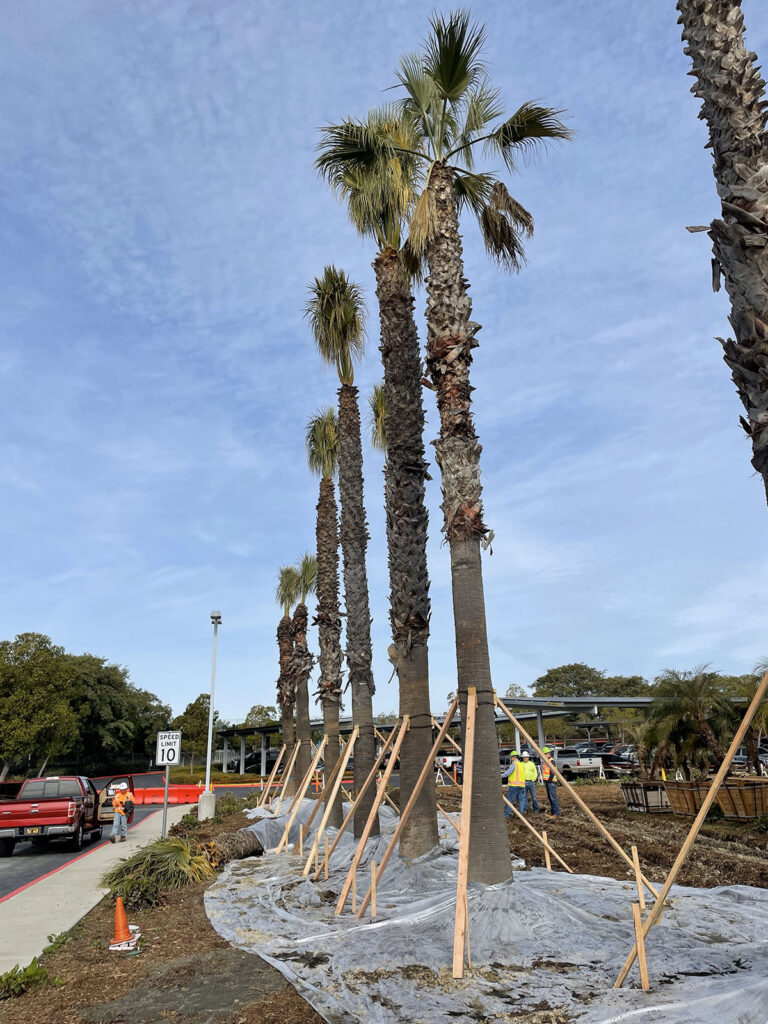
“Say an oak tree that doesn’t like a ton of water is planted in an area where they’re going to put lawn right up to it, which gets a lot of water,” he explains. “Your chance of saturating that root ball too much, especially with a newly transplanted tree, is going kill it. It’s been growing natively its whole life, not getting a lot of water, then you put it into a situation where it’s getting too much.”
Marks also says that good post-care contributes exponentially to Environmental Design’s 99% success rate.
“We really recommend — and just about demand — that there’s very good sub drainage to the bottom of the root ball and very, very good topsoil,” he explains. “Trees do well if you have good soil, good sub drainage, and the proper irrigation that’s getting the root ball watered evenly. There’s no reason to lose the tree.”
Importance of Safety and Training
Moving a tree is naturally a big job with a lot of moving parts, which makes safety and training paramount in the tree relocation industry.
Crews must be trained to use the heavy equipment required, and detailed safety protocols must be followed to prevent hazards while ensuring the health of the tree during the move.
Holland says that ongoing training and adherence to safety guidelines are non-negotiable aspects for a tree moving company.
“Our new guys go through rigorous training. They’re not allowed to touch equipment or anything like that for a while,” he explains. “Passing on that knowledge and keeping people engaged is important. Getting people enthusiastic about what they’re doing and going from the planning phase to getting the end result. It takes a special touch.”
Marks says that Environmental Design’s ArborLift® has helped to mitigate a lot of the risks of danger to their crews.
“It’s so much safer than cranes and gantry lifts, where you had four-cylinder points and you ran these big 40,000-pound beams up above and then dropped your rigging down off those beams,” he explains. “That was very dangerous. Now, with everything down at ground level, it’s much safer.”

The Business of Tree Moving
Tree relocation can be lucrative, but it comes with its challenges. The size and location of the tree, accessibility, and client requirements can all impact the cost.
Additionally, highly trained employees, adequate liability insurance, and rigorous safety protocols are essential to mitigate risks and protect the company, the crew, and the clients. These things come at a cost.
“Insurance and labor rates are a big cost of doing business,” Marks says. “And we like to take care of our people. They’re what make us.”
He further explains that safety training becomes a big deal when reducing liability and mitigating risks.
“You just don’t walk on these construction sites and not have all kinds of certifications and classroom training,” he explains. “Everybody’s certified on the equipment they’re running, and you have to document it. And that takes somebody to do that, so it’s a cost.”
The Bottom Line
Tree relocation represents a sophisticated blend of arboricultural expertise and logistical planning. For tree care professionals, mastering this service can not only boost business profitability but also contribute significantly to environmental conservation.
By choosing relocation over removal, tree care professionals can offer a valuable service that benefits both clients and the planet.


